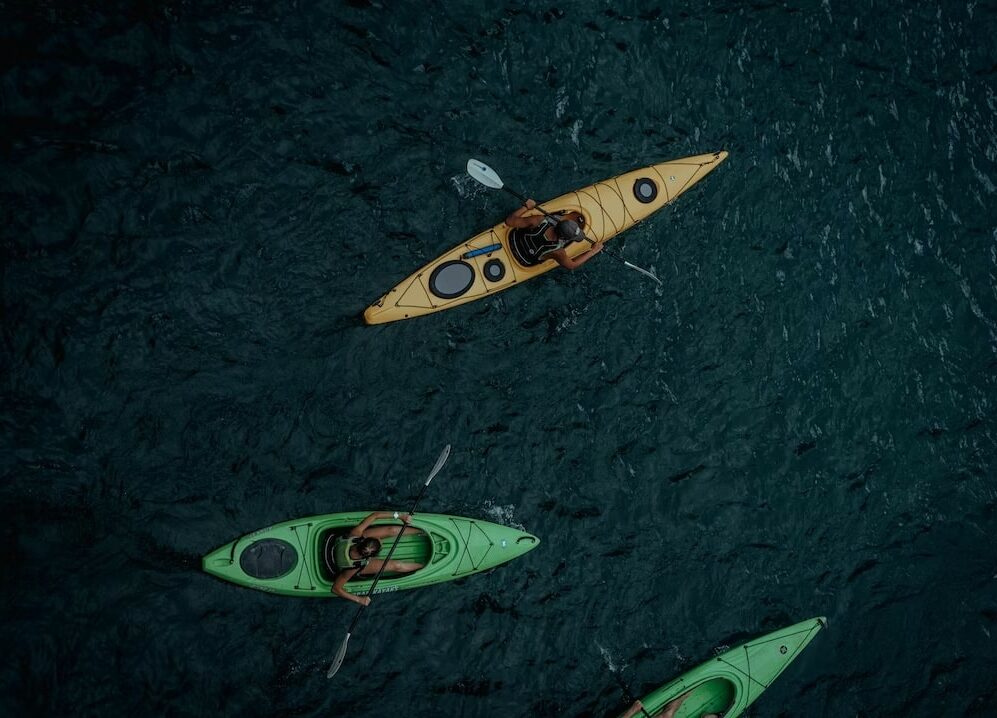Kayaking has been steadily becoming one of the most popular outdoor activities in the US, with over 18.5 million people participating in it in 2021. Kayaking is an activity accessible to all people, regardless of skill level and previous experience.
There are three distinct types of kayaking, each with its own advantages and disadvantages. You can choose from recreational, touring, and whitewater kayaking. Naturally, not all of these options require the same types of kayaks or even kayaking experience.
Though most kayaking equipment is similar, some distinct differences can shape your entire experience, which is why picking the right one is crucial. If you are wondering how to choose a kayak and which type might be best suited for your needs, we’ve got the answers.
Let’s take a deep dive into the different types of kayaks available, their specifics, and their uses.
Choosing the right kayak can be a long and involved process, especially if you are new to this particular outdoor activity. To simplify the decision-making process, you should consider several factors, such as your age, experience, expectations, and goals for kayaking.
First and foremost, you must decide what kind of kayaking you are interested in so that you will be able to select the equipment based on that. Kayaks are primarily divided into 3 categories, depending on the experience you want to have. Let’s learn the differences between flatwater, whitewater, or specialty kayaks.
Flatwater kayaks include all of the paddlecraft that are designed for flat water or rather water that is shielded from waves, currents, and even winds. While flatwater kayaks are most often associated with recreational kayaking, certain types require paddling proficiency and experience, especially for competitive events. Here’s the main overview:
Sit-on-Top Kayaks
These kayaks are a more modern iteration of their original kayak counterparts. The main feature that defines this paddle craft is the lack of the traditional seat and hull. Instead of inserting your legs in the hull and limiting your range of motion, you simply need to sit in the designed depression at the top of the kayak. This option is excellent for beginners as it has no chance of filling up with water if it flips over.
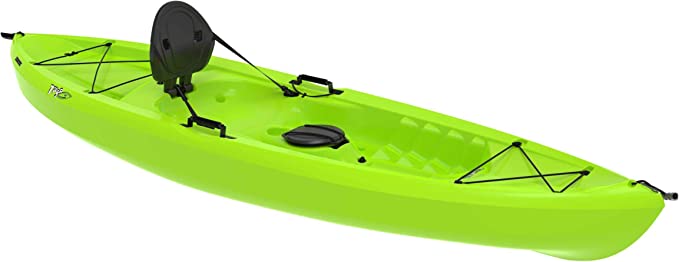
Uses
- Paddling on protected coastal waters
- Paddling on slow-moving rivers
- Paddling on lakes
Recreational Kayaks
Recreational kayaks, which are the biggest part of the over 600,000 registered paddlecraft in the US in the past decade, are kayaks designed for leisurely activities on flat waters. These crafts have wide hulls and a length between 8 and 12 feet. They are easy to enter and exit, just as they are easy to maneuver.

Uses
- Taking short multi-day trips
- Quicker, more efficient routes
- Paddling on waters with minor waves and streams
Day Touring Kayaks
Day touring kayaks are crafts designed to be light and easy to maneuver while also having enough storage for all the necessities for a day trip. These kayaks are typically between 13 and 16 feet long, and they are fully compartmentalized, which offers buoyancy in case they get filled with water. While these crafts do not have a full-sized hull, there is more than enough storage.

Uses
- Day-long trips off the sea coast
- Overnight trips on calm lakes
- Day trips on smooth river waters
- Paddling on slightly choppy waters
Ocean Kayaks
Ocean kayaks are essentially small boats that are designed to withstand the choppy waters of oceans and bays. They are much longer and narrower than whitewater kayaks as they are built to be stable and sturdy on choppy waters. These kayaks are built with covered decks, and you can install a spray deck. These kayaks differ from regular ones in length, as they are between 12 and 24 feet long.
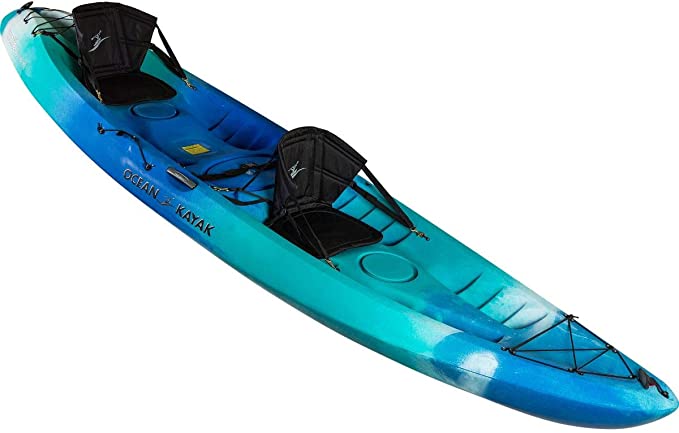
Uses
- Ocean waters paddling
- Choppy bay waters paddling
- Paddling in the sea
- Open-lake paddling
Tandem Kayaks
Tandem kayaks are 18 to 24 feet long crafts that are broader than solo kayaks. They are called double kayaks due to the two seats they contain. These crafts can be used either by two people paddling in tandem or by one person that will use the other seat as storage.
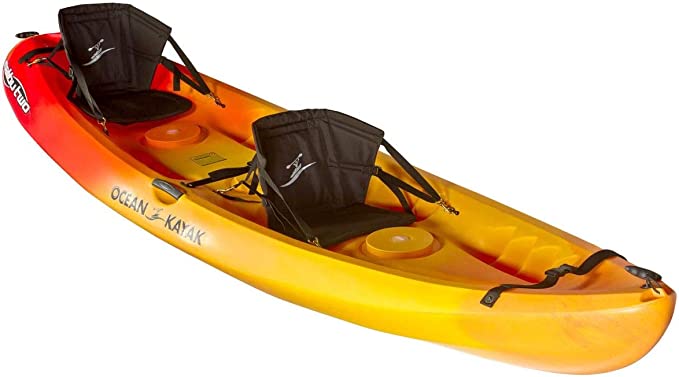
Uses
- Recreational tandem paddling on calm waters
- Tandem racing on calm waters
- Whitewater tandem paddling
- Sea water paddling
Kayaks for Kids
Kayaks for kids come in all the shapes that adult kayaks do, except they are smaller in size, which makes paddling easier for kids. These crafts can be sit-on-top, whitewater, and even inflatable, depending on the kid’s experiences and abilities. They are excellent options for a fun day on the water.
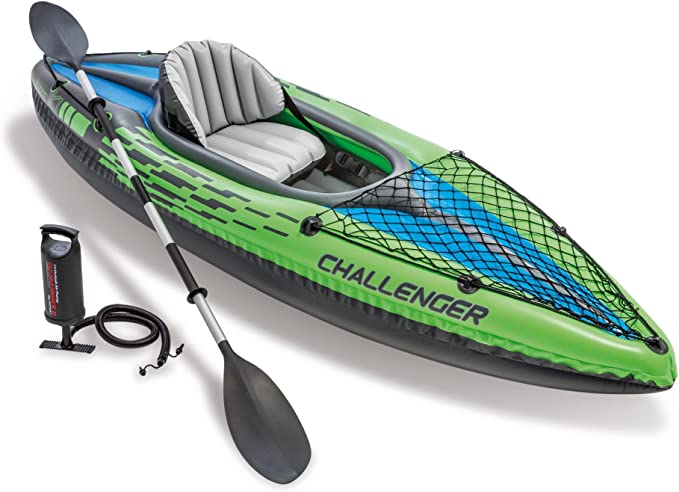
Uses
- Recreational paddling on flat waters
- Whitewater paddling
- Sea water paddling
- Flatwater racing
Whitewater kayaking is a high-octane sport that requires you to navigate a fast-running river along with its trajectory. This is a type of kayaking that requires a special kind of decked watercraft, though you don’t have to limit yourself to one particular choice. It is up to you to choose from the 8 available options of kayaks.
Playboats
Playboats are also known as freestyle canoes. They are much smaller than recreational kayaks as they are designed to be agile and to keep the paddler flexible. Playboats are used for a discipline of whitewater kayaking in which the paddlers perform technical moves and tricks in one sport of the river. Typically the competitors choose standing waves or hydraulic jumps for their tricks.
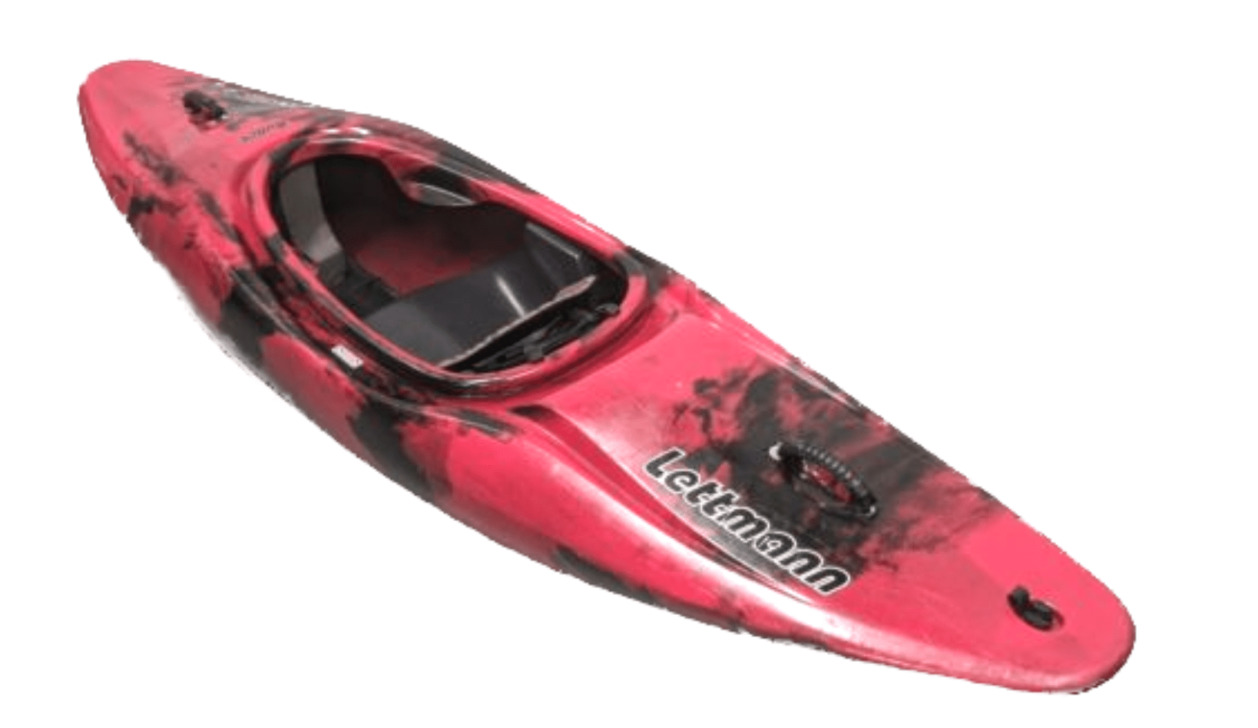
Uses
- Canoe freestyling
- Whitewater rafting
- Choppy waters paddling
Creek Boats
Creek boats are whitewater kayaks designed for descending steep but low-volume river waters. These creek boats are built in a way that arranges the volume around the cockpit, which in turn ensures that neither end of the watercraft will submerge too quickly.
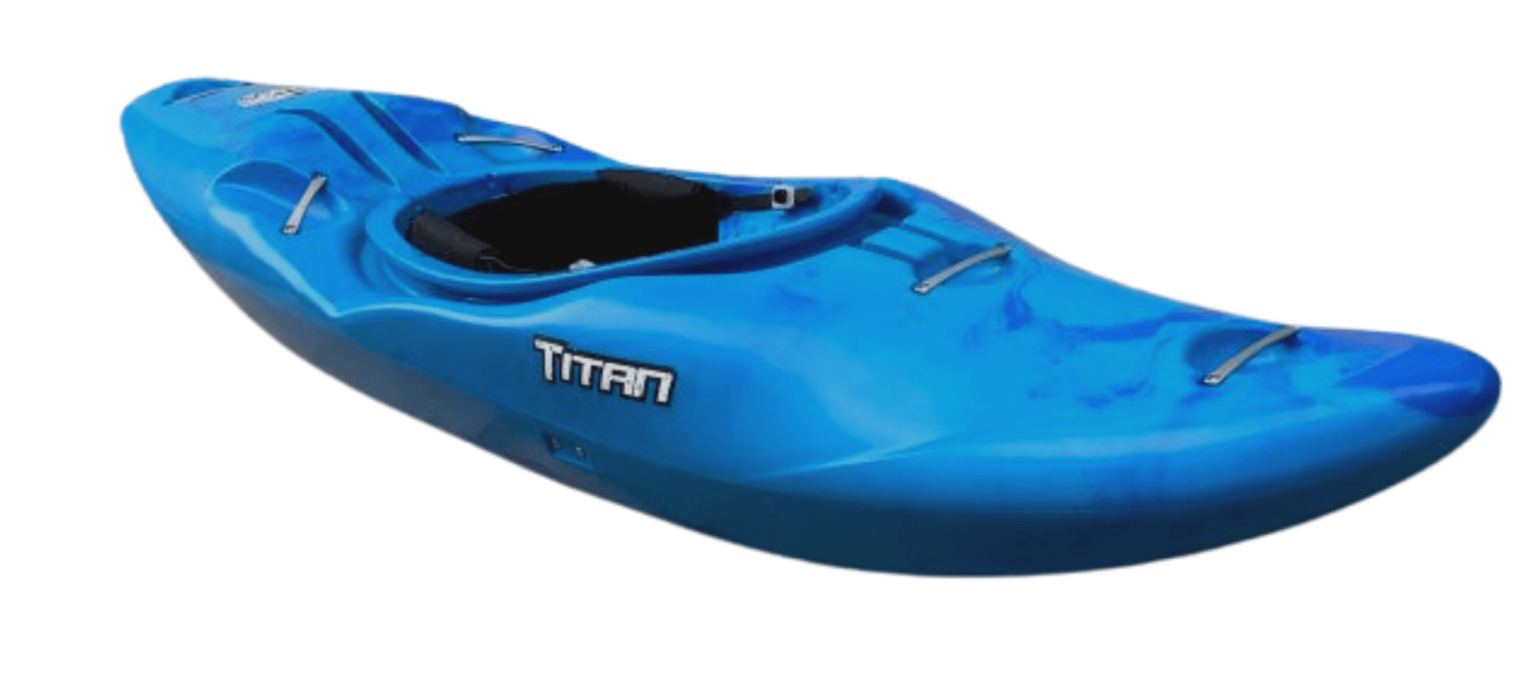
Uses
- Freefalling waterfalls
- Creeking
- Tricky waters
River Runners
River runners are stable whitewater kayaks designed to move swiftly with the stream of a fast-paced river. It can be maneuvered swiftly and easily, which makes it perfect for moving through waves and currents, as well as making sharp turns and making eddy lines.
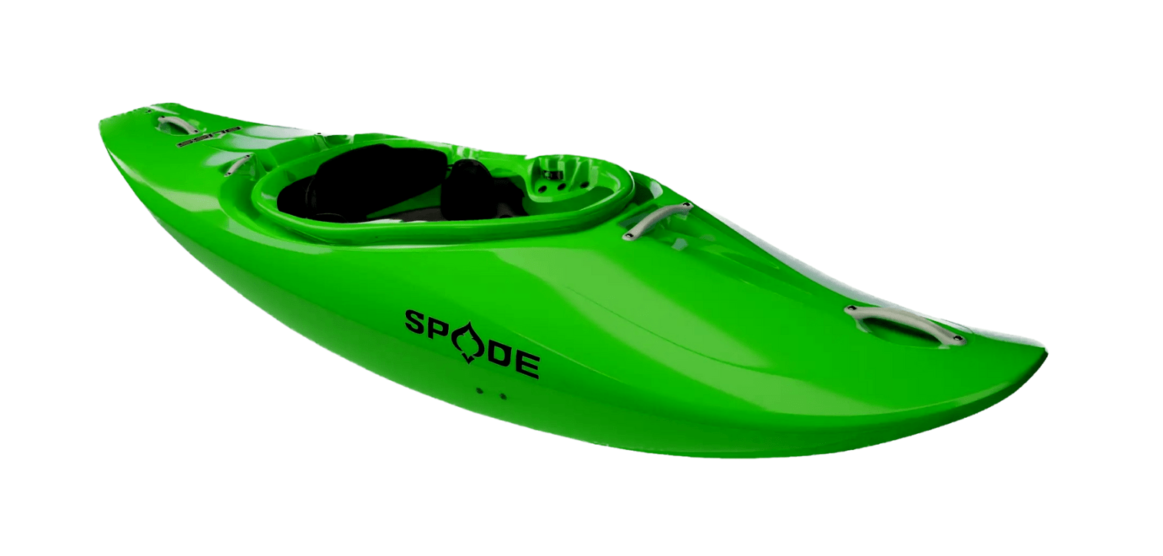
Uses
- River runs
- Sea water short run paddling
- Ocean water short run paddling
- Paddling on choppy waters
Inflatable Whitewater Kayaks (Duckies)
Duckies or inflatable kayaks are a combination of a sit-on-top kayak and a raft. Inflatable kayaks are watercraft suitable for all water conditions ranging from flat waters like calm lakes to whitewater rivers. They can be easily deflated and inflated, making them handy and easy to use. These kayaks are particularly popular amongst whitewater paddlers who prefer low-volume rivers.
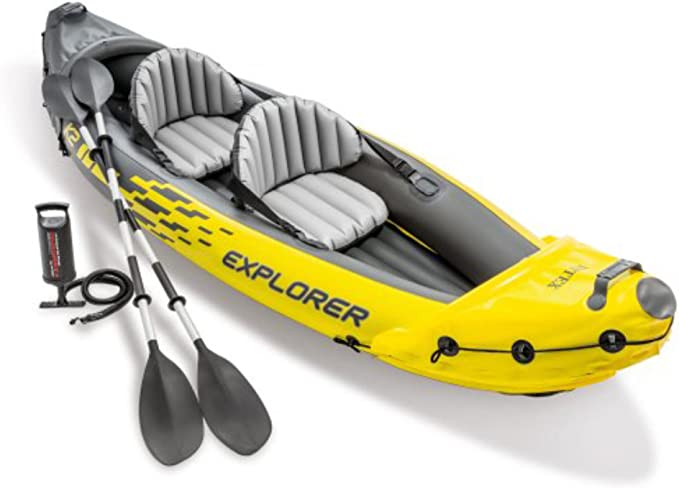
Uses
- River runs
- Flatwater paddling
- Creeking
Longboats
These kayaks are most commonly used for whitewater racing thanks to their relatively light constitution, at around 55 lbs, and length of just over 11 feet. They are designed as racing kayaks and are especially suited to slalom races, which require a lot of leans and turns.
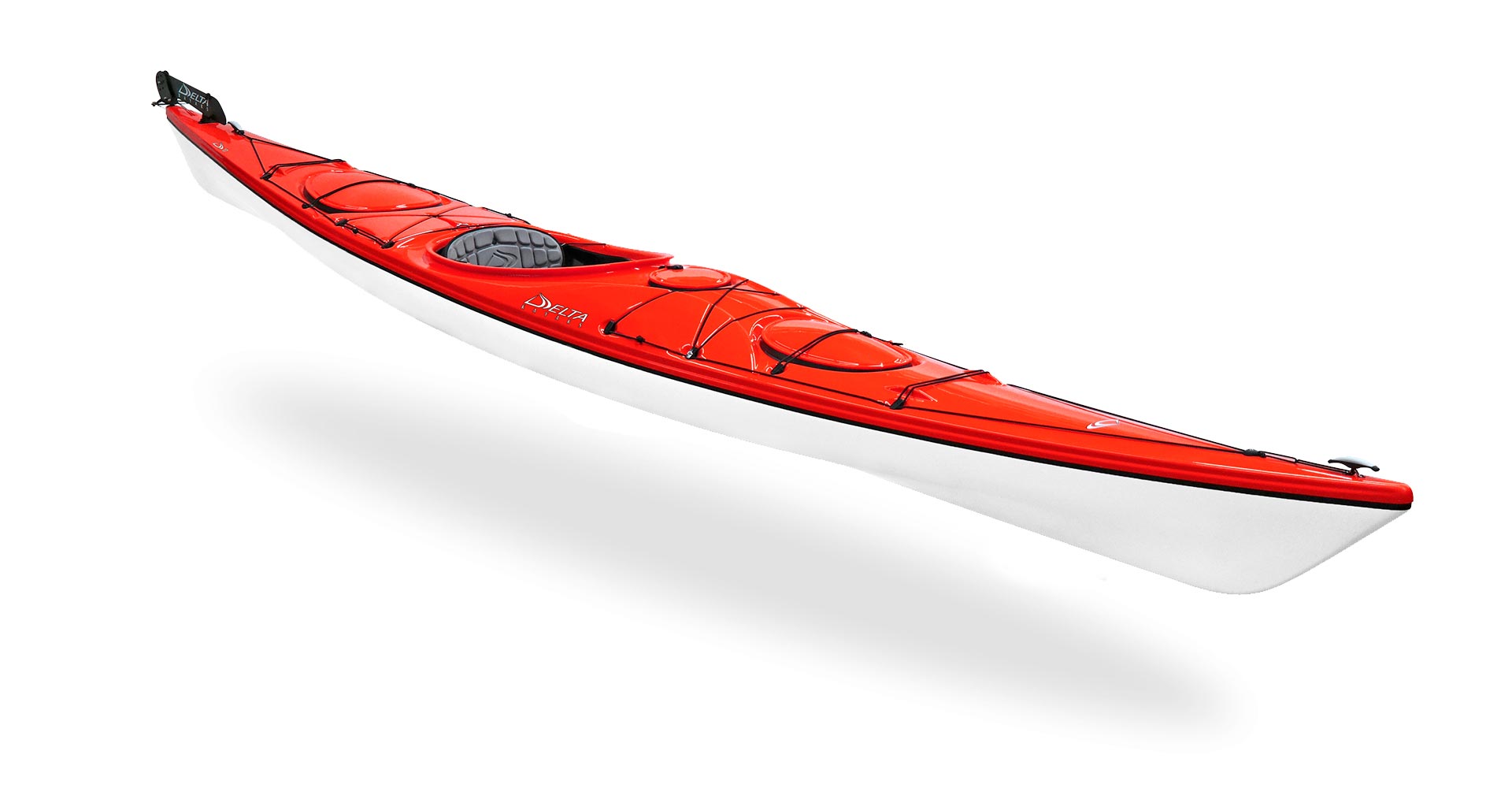
Uses
- Whitewater paddling
- Whitewater racing
Crossover Boats (Whitewater and Flatwater)
These are kayaks that can be used equally well for flatwater and whitewater conditions. You can think of them as hybrids that provide you with stability as well as agility and speed of movement. These kayaks are particularly suited to beginners and amateurs as they can try out different environments without investing in two kinds.
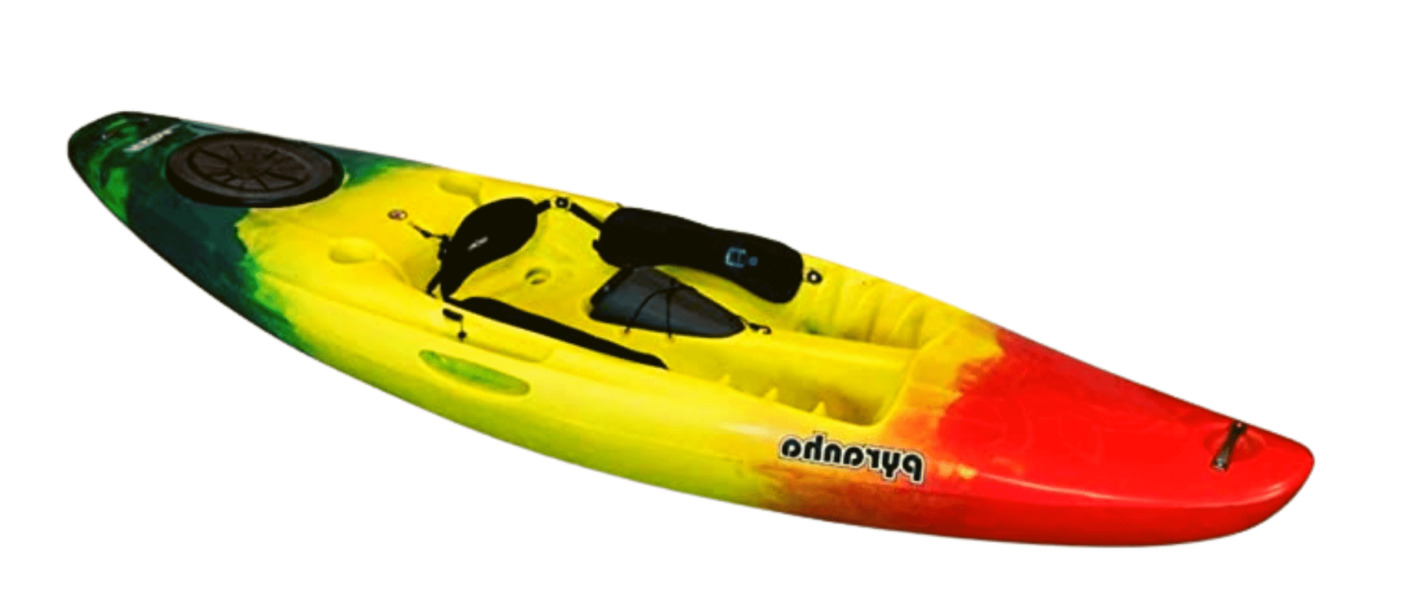
Uses
- Whitewater paddling
- Whitewater racing
- Paddling on a lake
- Creek or slow river paddling
- Sea paddling
These kayaks are designed with a specific goal or purpose in mind. They exist to meet very specific requirements regarding shape, storage size, and even water activities. If you are interested in watersports other than paddling, you should look into these specialty kayaks and the features they provide.
Pedal Kayaks
Pedal watercrafts are designed to enable you to maneuver them by pedaling rather than paddling. Instead of using paddles to move and turn the kayak, you can take advantage of the pedals built at the bottom of the watercraft. These kayaks are best suited for calm waters such as lakes, slow rivers, and even shielded coasts.
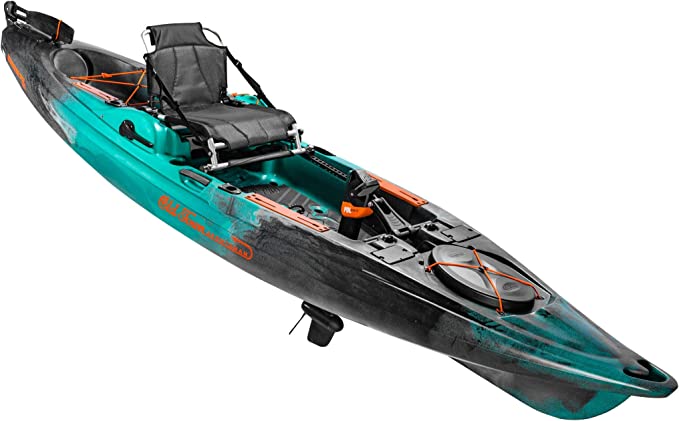
Uses
- Pedaling on a lake
- Creek or slow river pedaling
- Kayak fishing
Fishing Kayaks
As their name suggests, fishing kayaks are best used for this particular activity. They have wide, flat hulls, which guarantee stability, and several built-in features, such as storage areas for the coolers and even rod holders. Because these watercraft are so specialized and heavy, they also tend to be more expensive.
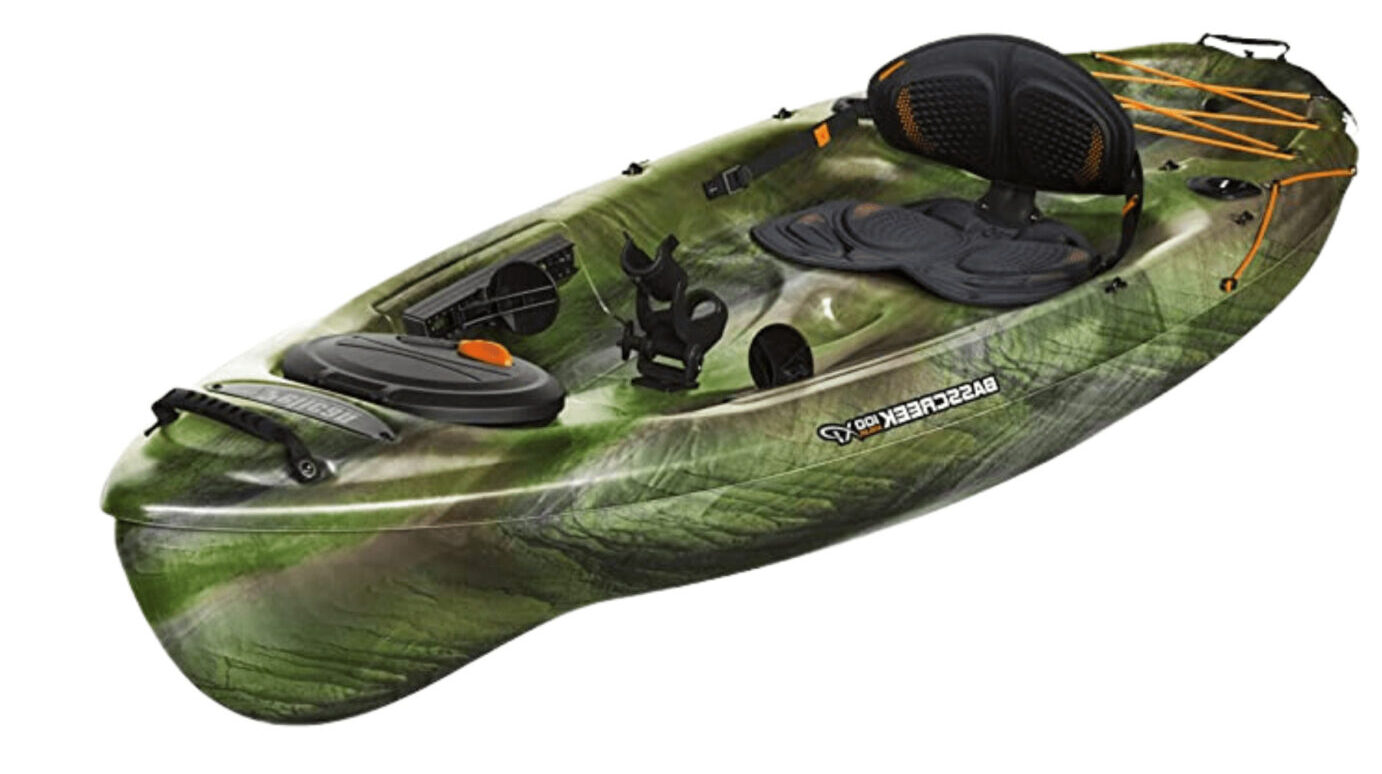
Uses
- Calm lake fishing
- Slow river or creek fishing
- Protected coast fishing
Surf Kayaks
These kayaks are best suited for quick and exhilarating water adventures aimed at riding waves. They are relatively short, at about 10 feet, and they have a flat hull with a single fin- similar to surfboards, built-in for easier wave threading. Given that their design is aimed at surfing, there is a notable lack of comfort, which makes them unsuitable for flatwater paddling.
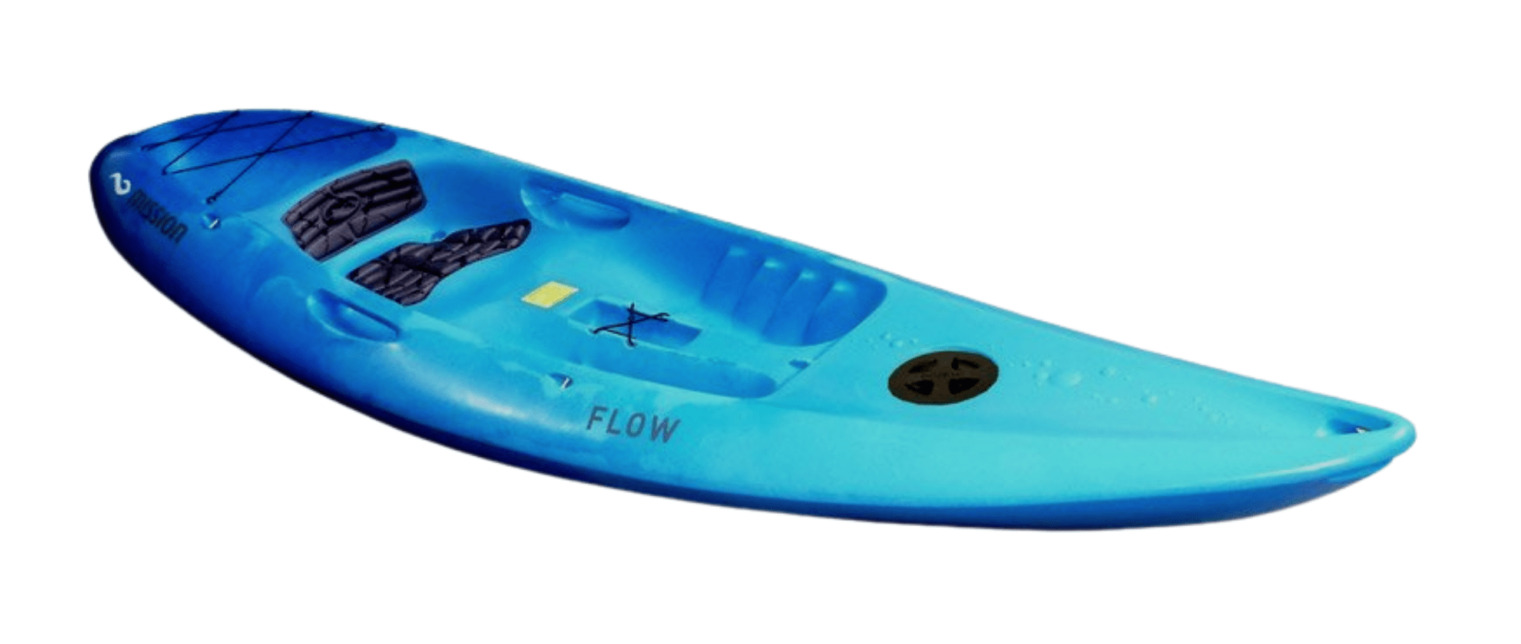
Uses
- Ocean wave surfing
- Sea wave surfing
While the kayaking conditions and your goals should absolutely be the most important factors that go into your decision-making process, they should not be the only ones. We analyzed each deciding element individually to help you make the right decision according to your needs.
Weight Capacity
The weight capacity of the kayak you choose is one of the most important aspects of your experience. Certain types of kayaks, such as river runners and inflatable kayaks, have a lower weight capacity and can safely hold one average-sized adult. On the other hand, fishing and tandem kayaks can hold up to 700 lbs in passenger weight.
Depth
The deeper the kayak is, the more dry your ride will be. However, these kayaks are also more difficult to navigate in strong winds. For example, flatwater recreational kayaks tend to have a depth between 13 and 15 inches, whereas whitewater kayaks are much more shallow.
Length of Kayak
Longer watercraft are much faster by the laws of physics. They move through the water much more smoothly, making them quicker. These watercraft are perfect for flatwater conditions because they require stability. On the other hand, shorter kayaks are suitable for whitewater conditions because they are agile and easy to maneuver. Shorter kayaks are also more affordable and easier to transport.
Width of Kayak
The wider a kayak is, the slower it is. That being said, watercraft with wider designs are also much more stable, which makes them best suited for calm water conditions. Alternatively, kayaks with narrower designs are more mobile and fast, perfect for choppy waters.
Kayak Seats
The seats in a kayak are designed according to the purpose of that particular watercraft. If you opt for a racing or surfing kayak, then you cannot expect much comfort from the seats, as they are designed to provide better paddling angles. Conversely, if you opt for touring and recreational kayaks, then you’ll find that they have higher backrests and more comfortable seating overall.
Hatches
Hatches are water-tight compartments built into the kayak’s hull, designed to store various items. However, storage is not their primary purpose. The hatches exist so that the air trapped inside them makes the watercraft much more buoyant and harder to sink. Depending on the kayak, it may have a hatch near the bow or the stern, or it might not have a hatch at all.
Kayak Dimensions
Depending on their aim, kayaks can vary in length from 6 to 20 feet, with the shorter kayaks used either for children or for whitewater kayaking. When it comes to the width, these watercraft tend to be anywhere from 21 to 35 inches wide, with the wider ones being slower. The depth of the kayak ranges from 10 to 15 inches.
Is kayaking expensive?
Kayaking is a relatively inexpensive hobby in the long run, as the initial expense is the only one you’ll make. Alternatively, you can also rent the equipment.
How much does a kayak weigh?
The weight of the kayak ranges anywhere from 20 to 100 pounds. Whitewater crafts are much lighter, whereas fishing and tandem kayaks are heavier.
Is kayaking dangerous?
Like any outdoor activity, kayaking comes with its own set of risks. While it can be a dangerous sport, if you do your due diligence and wear the proper equipment, you will be safe.
What kayak safety equipment do I need?
You should never go kayaking without a life vest, helmet, GPS/map, and of course, flashlights in case you find yourself stranded in the dark.
What type of kayaking clothes should I wear?
Polyester and quick-drying nylon are the best options for clothing. You can also opt for wool, as it insulates when wet, or you can even decide to wear a wetsuit.
Kayaking can be a delightful adventure for you, your family, and your friends. It allows you to enjoy nature while providing you with adrenaline-filled activities through whitewater rafting. Furthermore, flatwater paddling offers numerous calm, peaceful activities for people that don’t enjoy the strain and risk of whitewater kayaking.
Take your own individual preferences into account and pick the kayak type and size best suited to your needs for an enjoyable and entertaining experience.
- Participants in kayaking in the US since 2006 – statista.com
- Registered Kayaks, Canoes USA – statista.com
- Review – Whitewater long boats – chrishipgrave.com
- Your kayak hatch guide – brooklynkayakcompany.com
- Types of Kayaks – kayakhelp.com
- What is flatwater kayaking – paddlingaway.com
As always, we create our content with you, fellow divers, in mind. So, how’d we do? Did you find this informative? Did it help you make a decision? Did we miss anything? We’d love to hear from you below. Thanks for reading and we hope your next dive is a great one!


